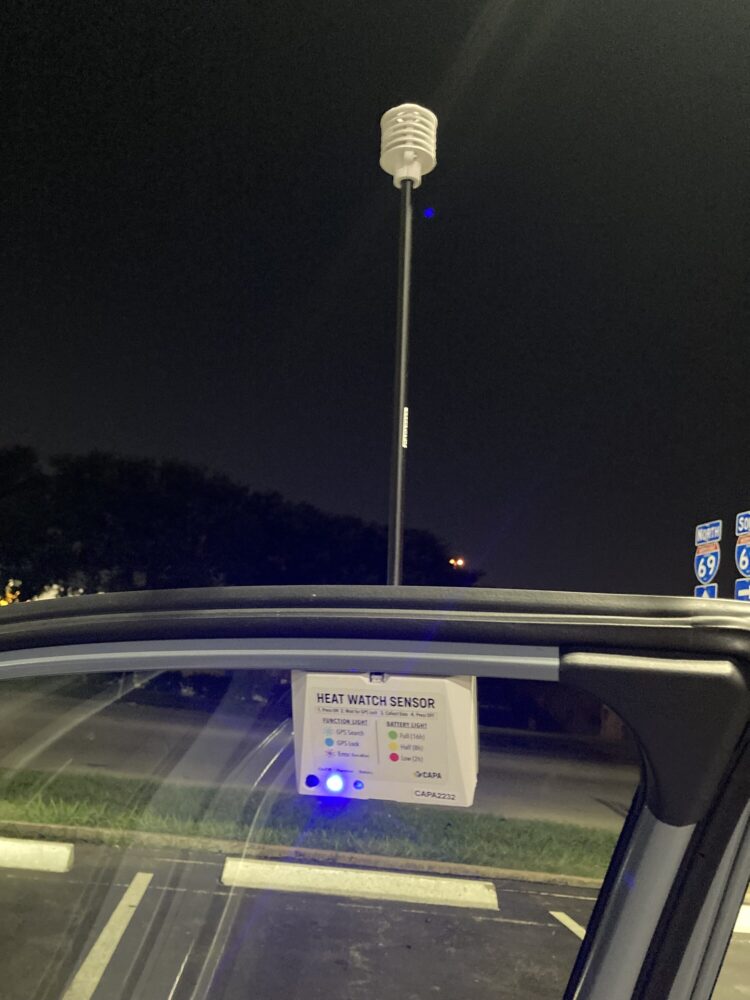Courtesy of HARC
About 100 volunteers were looking for areas in the region that are most likely to experience the “urban heat island effect” earlier this month.
Houston is experiencing the biggest heat wave of the year with temperatures in the triple digits. Some areas of the region feel the heat more than others, at least according to the last heat mapping from the Houston Harris Heat Action Team (H3AT).
According to the U.S Environmental Protection Agency, the heat island effect happens when there are higher temperatures in areas with more buildings, roads, and other infrastructure while areas with natural landscapes like forests and water bodies usually absorb the sun’s heat.
Dr. Stephanie Piper is the Houston Advanced Research Center’s (HARC) H3AT Mapping Campaign Project Manager. She said areas like Gulfton and Alief were some of the hotter areas in the last campaign in 2020.
“[The previous campaign] was about half the size of the 2024 one. That gave us a pretty good baseline understanding of where these high-heat areas are within the city,” she said.
Piper said that while the previous campaign provided a good baseline of information, there’s funding that’s backing this year’s study to help the most affected neighborhoods.

Courtesy of Catherine Callaway
“Mitigating this heat is important to protect people’s health and wellness in the city,” she said. “And being able to identify where neighborhoods are the hottest allows us to really focus on those mitigation strategies.”
The data, which Piper said will likely be released in early 2025, will mostly be used to determine where trees can be planted to cool down the region. But areas that aren’t suitable for tree planting might have to come up with other alternatives like cooling roads or construction that can provide more shade.
The recording process was split into nine areas for this year’s campaign. Some of the communities volunteers went to included Tomball, Aldine, West University, Downtown Houston, Jacinto City, Pasadena, Sunnyside, Meyerland, and Sharpstown.
“We’re seeing nationwide high heat within cities and particularly in low-income areas pretty nationwide, but we’ve definitely seen that in Houston and expect to see that again and get some more data support so we can get benefits to those disadvantaged communities,” Piper said.











